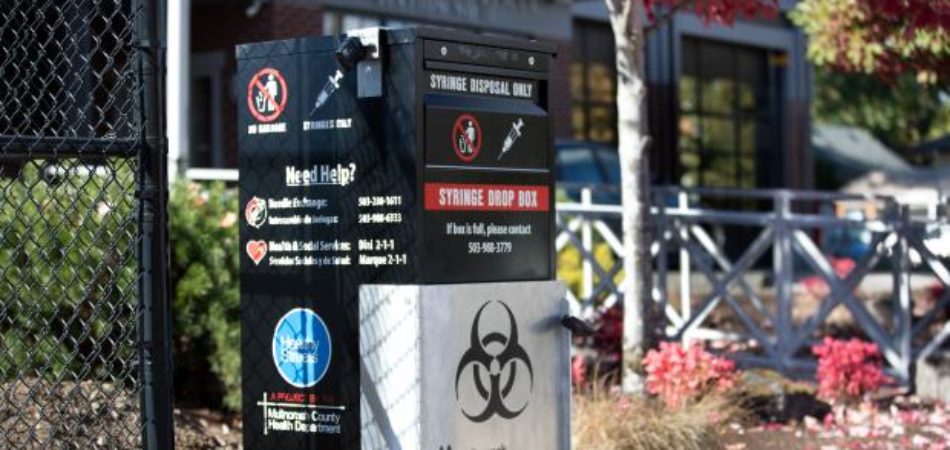From Courtroom to Care: 5 Key Strategies Behind New Mexico’s Competency Diversion Pilot

(Photo Credit: Flickr/Karen Neoh)
New Mexico launched a pilot program in 2024 to divert people with mental health needs and misdemeanor charges out of the justice system and into care. This innovative approach addresses a persistent issue that courts across New Mexico and the country know all too well: After a lengthy and complex competency process, defendants with low-level charges are found incompetent to stand trial and their cases are dismissed. They return to the community without having their mental health needs addressed, causing them to end up in the justice system again within months.
This revolving door harms defendants and counties. For example, a study in Bernalillo County, New Mexico’s largest county, found that the 100 people with the highest use of behavioral health services and jail bookings accounted for 871 bookings, 35,891 days in jail, and $5.5 million in costs.
Meanwhile, New Mexico’s competency to stand trial system had grown increasingly overwhelmed, particularly for people with behavioral health needs and low-level charges. On average, defendants were waiting a year or more to go through the competency process only to be found incompetent and released. Long waits, few resources, and a lack of treatment options limited what courts could do for these people.
The idea for a pilot program emerged when the New Mexico States Supporting Familiar Faces project began to wrap up at the end of 2023. The New Mexico Supreme Court Commission on Mental Health and Competency, with Justice Briana Zamora as liaison, tasked a cross-system workgroup with developing a new approach, which is now being piloted in four very different judicial districts. So far, the pilot has seen promising results.
Pilot Details
While each pilot site tailored the program to fit local needs and resources, the core steps of the program are as follows:
- Screening for serious mental illness and eligibility for the competency diversion program
- Referral to an appropriate diversion track, which can include case management services, treatment at an appropriate inpatient or residential treatment facility, intensive outpatient treatment, or community-based treatment
- Connection with a case manager and/or court navigator who assists throughout the diversion process
- Case dismissal when the individual completes the diversion program
In July 2024, the pilot program launched in the 3rd Judicial District, the state’s second most populous region, Doña Ana County. Since then, pilot programs have been established in the 4th Judicial District, a rural district in the northeastern area of the state with a population of about 31,000; in the 12th Judicial District, a semi-rural district in southern New Mexico with a population of nearly 90,000; and in the 1st Judicial District, Santa Fe and Rio Arriba Counties. In 2025, the state legislature appropriated $3 million to support the continued development of the program.
Preliminary data on outcomes from the pilot sites shows exciting results. For instance, in the 3rd Judicial District, 58 people have been referred to the diversion program and connected with local behavioral health services and substance use treatment. As of spring 2025, 15 people have successfully completed the program, all of whom are continuing behavioral health services.
“Supporting a community-centered approach has been vital to the success that we’ve seen so far,” said Jaime Michael, director of Doña Ana County Health & Human Services. “Collaborating with local providers and leaders to better connect people to care and creating peer-to-peer learning for clients, service providers, and judicial representatives were crucial to the early success of the project.”
Leaders in Doña Ana County reported that through the program, several participants have engaged in substance use treatment, many participants have secured permanent housing, and some have found stable employment.
Strategies for a Successful Competency Diversion Program
The Commission was able to design and launch a new pilot program in less than a year by strategically selecting pilot sites and using existing resources. Other states looking to divert people with low-level charges and mental health needs out of the competency system and into care can use any of the following strategies that are making New Mexico’s pilot successful:
- Build on existing diversion programs. To get the pilot program up and running quickly, the Commission looked at judicial districts that were already operating diversion programs. The 3rd Judicial District has a robust network of existing behavioral health systems and diversion options, which made it an ideal first pilot site. The pilot program became a new track in the district’s existing network of diversion programs and required minimal effort to implement other than making some procedural changes.
- Tailor services to individual needs. The pilot sites have found that most people in the diversion program need case management services, such as housing and employment support, referrals to mental health care, and connections to substance use treatment. Sites did not have to create new, specific diversion programs for participants. Instead, sites identified participants’ needs and provided appropriate connections and supports.
- Have a housing plan. Across the pilot sites, leaders cited housing as the greatest obstacle. Many people referred to the program do not have stable housing, which could make it difficult for them to stay engaged and connected to the program. Pilot sites have employed strategies to address this challenge. For example, the 3rd Judicial District connects individuals to housing support as part of the diversion program and included housing specialists on the multidisciplinary program planning team.
- Identify a champion judge. Because the pilot is a court-based diversion program, a judge who is willing to be a champion in the court is a key ingredient for success. A champion judge can effectively influence and collaborate with prosecutors, defense attorneys, court staff, and forensic providers. A magistrate judge in the 3rd Judicial District, who is an advocate for improving the court’s response to people with mental health needs, oversees the diversion pilot program and has been pivotal for facilitating coordination across systems.
- Use community-based peer navigators. Participants in the pilot diversion program are connected with a peer navigator as soon as they enter the program. Leaders in the 3rd Judicial District emphasized that using peer navigators has been crucial for participants to agree to and engage in treatment. Pilot sites recommend placing peer navigators in a community-based service agency rather than in the court because the navigators will have greater ability and knowledge of navigating across systems.
New Mexico’s statewide, cross-branch, collaborative approach to addressing the needs of people with mental illness and justice involvement is bringing real changes to the state and offers an innovative model for other states that are struggling to reduce competency waitlists and connect individuals with mental health needs to appropriate services and supports.
ABOUT THE AUTHOR











